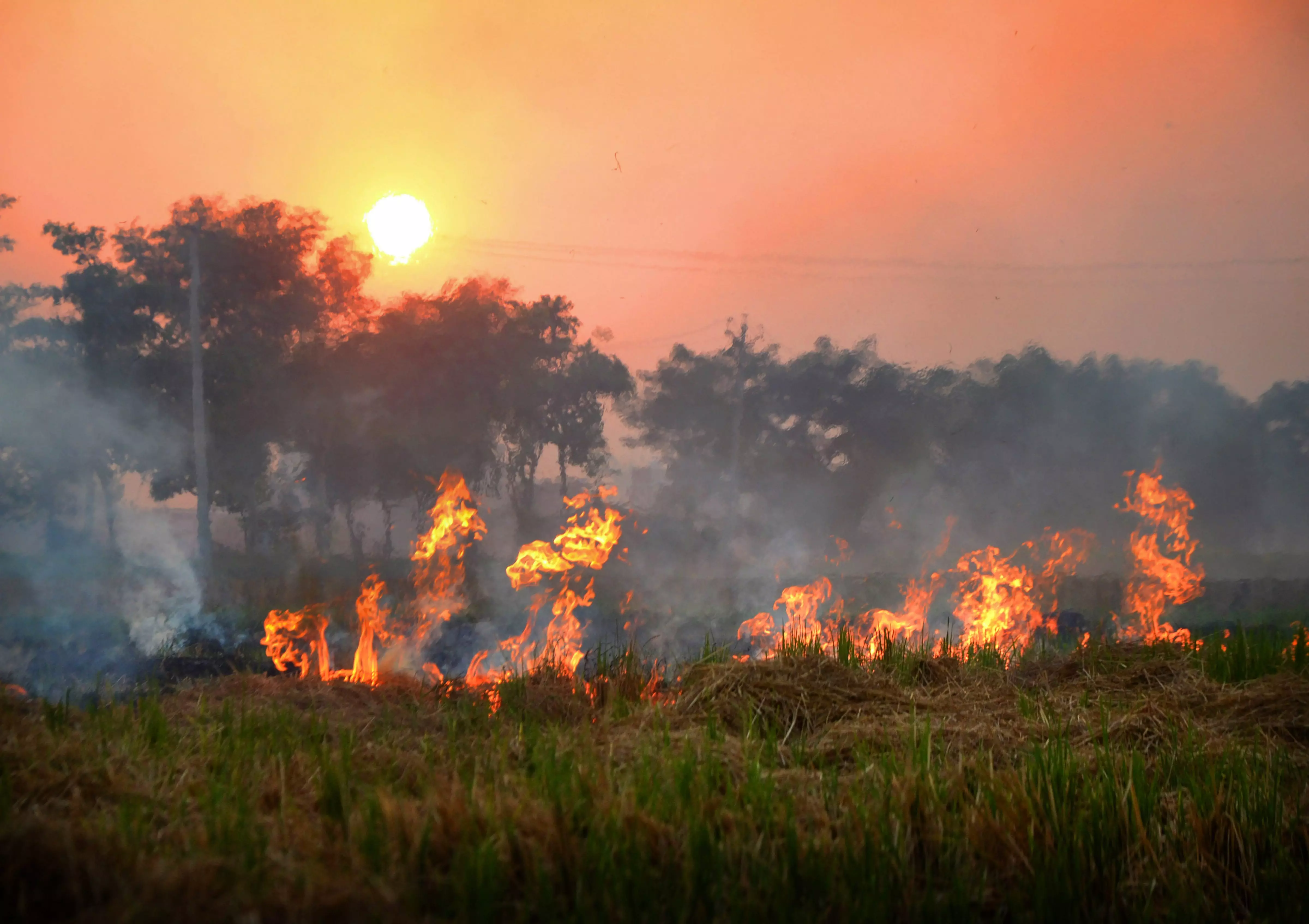
Haryana, Punjab report ‘severe’, ‘poor’ air qualities as stubble-burning continues

Chandigarh, Nov 4 (PTI) Many parts of Haryana on Saturday reported air quality indices in the 'severe' and 'very poor' categories while it was 'poor' in parts of neighbouring Punjab.
Punjab reported 1,360 fresh stubble-burning incidents as farmers continued to burn crop residue.
According to the Central Pollution Control Board data on Saturday evening, Fatehabad recorded an air quality index (AQI) of 464, followed by Faridabad at 439, Jind at 428, Kaithal 426, Hisar 425, Sonipat 414, Sirsa 414, Gurugram 410, Bahadurgarh 369, Kurukshetra 325, Rohtak 319 and Bhiwani 307.
In Punjab, Bathinda reported an AQI of 385, followed by Ludhiana 301, Jalandhar 291, Mandi Gobindgarh 277, Amritsar 264, Khanna 265 and Patiala 247.
Chandigarh, the joint capital of Punjab and Haryana, saw an AQI of 179.
An AQI between zero and 50 is considered 'good', 51 and 100 'satisfactory', 101 and 200 'moderate', 201 and 300 'poor', 301 and 400 'very poor', and 401 and 500 'severe'.
Meanwhile, with 1,360 new farm fires, the total number of stubble-burning incidents rose to 14,173 till Saturday, according to Ludhiana-based Punjab Remote Sensing Centre data.
The number of total stubble-burning incidents of 14,173 registered from September 15 till November 4 was 47 per cent less than 26,853 such cases in the corresponding period last year, as per the data.
The state had reported 23,465 farm fires during the same period in 2021.
Out of 1,360 stubble-burning incidents reported on Saturday, Sangrur reported a maximum of 240 such cases, followed by 140 in Ferozepur, 120 in Mansa, 116 in Tarn Taran and 112 in Bathinda.
On the same day in 2021 and 2022, the state had seen 3,032 and 2,437 farm fires, respectively.
Paddy straw burning in Punjab and Haryana is considered one of the major reasons behind the alarming spike in air pollution levels in the national capital in October and November. As the window for wheat — a key Rabi crop — is very short after paddy harvest, some farmers set their fields on fire to quickly clear off the crop residue for sowing of the next crop. PTI

